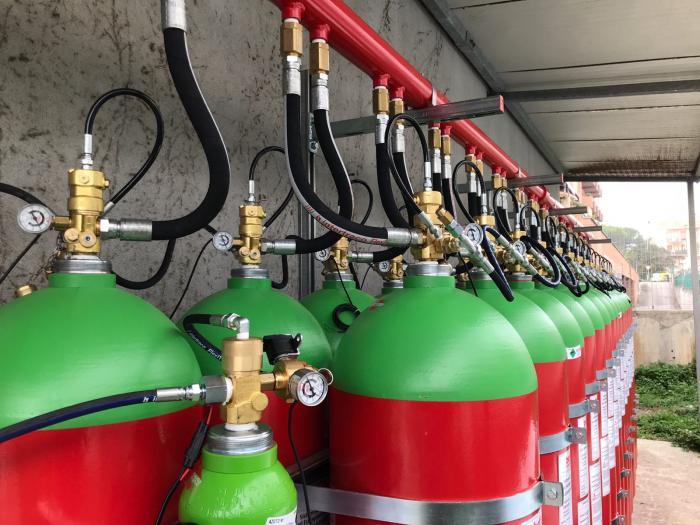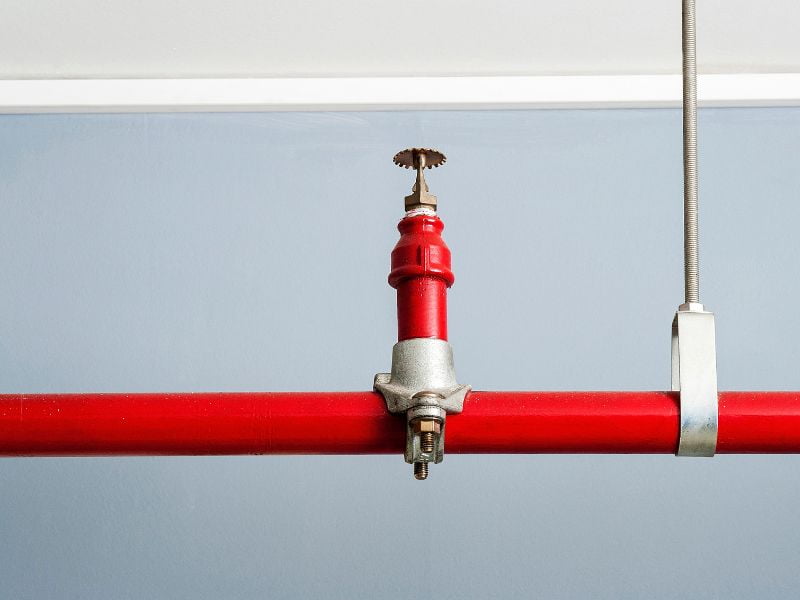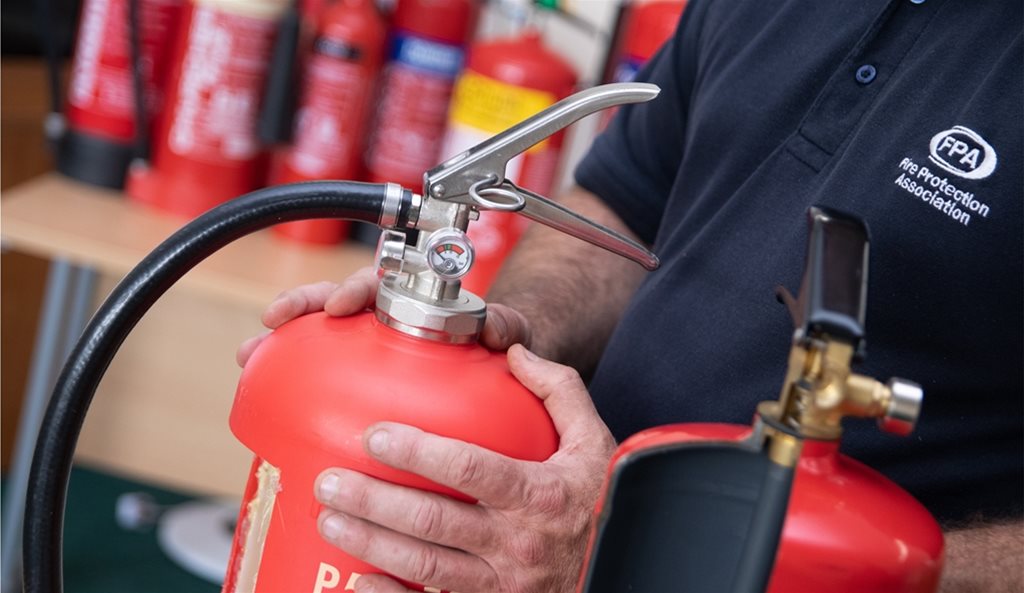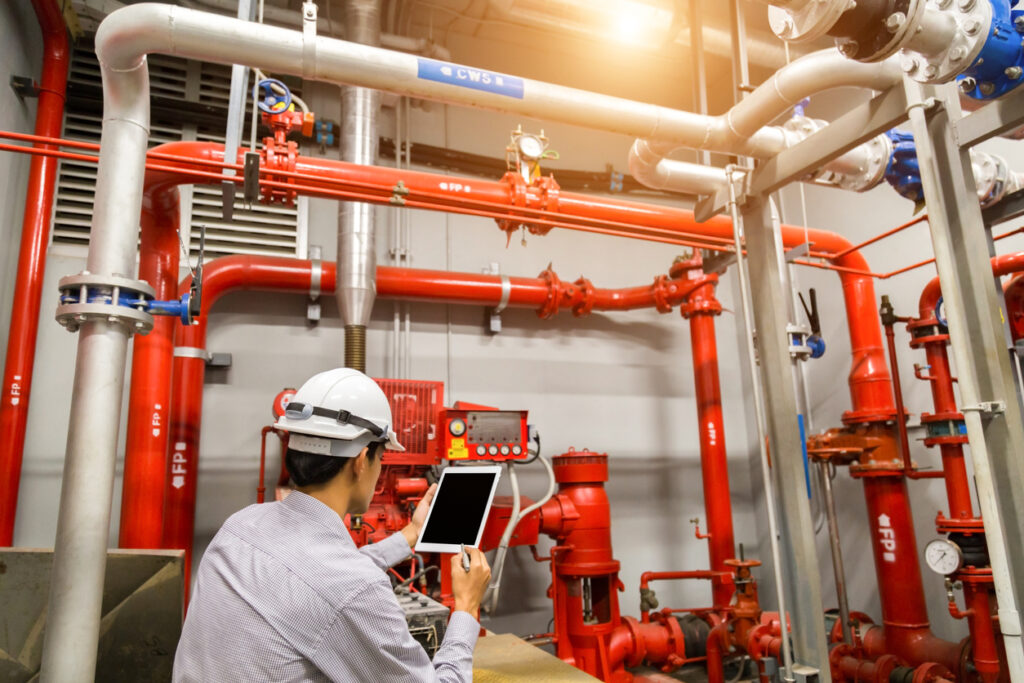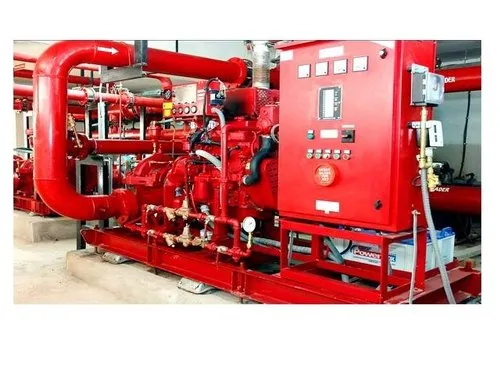FM-200: In today’s world, fire safety is a critical concern for businesses, institutions, and even residential properties. One of the most effective solutions for preventing fire damage is the fire suppression system.
In this blog post, we’ll delve into what FM-200 systems are, their working principles, pricing, benefits, and more.
What is FM-200?
FM-200, also known as HFC-227ea, is a clean agent fire suppression system widely used in various environments, including data centers, telecommunications rooms, and museums. Unlike traditional water-based systems, It is a chemically engineered agent that is effective in extinguishing fires without leaving a residue. This property makes it especially suitable for protecting sensitive electronic equipment and valuable artifacts.
Key Features of FM-200
- Fast-Acting: it can extinguish fires in seconds, minimizing damage.
- Clean Agent: It doesn’t leave behind any residue, making cleanup easy.
- Safe for Occupants: it is non-toxic at design concentrations, making it safe for use in occupied spaces.
- Environmentally Friendly: While it is a hydrofluorocarbon, FM-200 has a relatively low global warming potential compared to other agents.
How Does FM-200 Work?
Working Principles
The fire suppression system operates based on three primary mechanisms: cooling, smothering, and interruption of the chemical reaction in the fire.
- Cooling: The agent absorbs heat from the fire, effectively lowering the temperature below the ignition point.
- Smothering: FM-200 displaces oxygen in the immediate vicinity of the fire, reducing the availability of oxygen needed for combustion.
- Chemical Interruption: The agent disrupts the chemical reactions that sustain the fire, leading to its extinguishment.
System Components
A system typically comprises several key components:
- Storage Tanks: These contain the FM-200 agent under pressure.
- Discharge Nozzles: Strategically placed to ensure even distribution of the agent throughout the protected area.
- Control Panel: Monitors the system and initiates discharge when a fire is detected.
- Detection Devices: Smoke and heat detectors that trigger the system in case of a fire.
Installation Process
- Risk Assessment: A thorough analysis of the premises to identify fire hazards.
- Design: Creating a detailed plan for the system layout, including the number of nozzles and tank sizes.
- Installation: Setting up the tanks, piping, and detection systems.
- Testing: Conducting tests to ensure the system operates effectively.
Pricing of FM-200 Fire Suppression Systems
Factors Influencing Cost
- Size of the Area: Larger spaces require more extensive systems, leading to higher costs.
- System Design: A complex design may increase labor and material costs.
- Installation: Professional installation is essential for proper functioning, adding to the overall expense.
- Maintenance: Regular maintenance and inspections are crucial for safety and effectiveness, contributing to long-term costs.
Estimated Costs
While prices can vary widely, here are some ballpark figures for FM-200 systems:
- Small Systems (for areas around 1,000 square feet): $15,000 – $30,000
- Medium Systems (for areas around 2,500 square feet): $30,000 – $50,000
- Large Systems (for areas over 5,000 square feet): $50,000 and up
These costs may include installation, equipment, and initial maintenance. It’s essential to consult with a fire protection specialist to obtain a tailored quote based on your specific needs.
Benefits of FM-200 Fire Suppression Systems
1. Minimal Downtime
One of the most significant advantages of the systems is their ability to extinguish fires quickly, minimizing downtime for businesses. This speed is crucial in environments where every minute lost can lead to substantial financial losses.
2. Preservation of Assets
It is particularly effective in protecting valuable equipment, such as servers, electronics, and irreplaceable items. Since it leaves no residue, the cleanup process is minimal, allowing for a quick return to normal operations.
3. Safe for Occupied Spaces
Unlike some other fire suppression systems, It is safe for use in occupied areas. This factor is especially important for organizations that cannot afford to evacuate staff or customers during a fire incident.
4. Environmentally Conscious
While FM-200 is a hydrofluorocarbon, it has a low ozone depletion potential and is considered more environmentally friendly than older fire suppression agents.
FM-200 vs. Other Fire Suppression Agents
Water-Based Systems
- Pros: Readily available, inexpensive, and effective for many types of fires.
- Cons: Can cause water damage to electronics and sensitive materials.
CO2 Systems
- Pros: Highly effective and less expensive than FM-200.
- Cons: Can pose a suffocation risk to occupants and is not suitable for occupied spaces.
Other Clean Agents
- Pros: Similar benefits to FM-200, with varying environmental impacts.
- Cons: May have higher costs or specific limitations based on applications.
Maintenance and Inspection of FM-200 Systems
Regular maintenance is essential to ensure the effectiveness of FM-200 fire suppression systems. Here are some key practices:
1. Regular Inspections
Conduct routine inspections to check the integrity of tanks, piping, and nozzles. Ensure that detection devices are functioning correctly.
2. System Testing
Perform periodic tests to verify that the system activates correctly. This testing should be done by certified professionals.
3. Maintenance Records
Keep detailed records of inspections and maintenance activities. This documentation can be vital for insurance purposes and compliance with safety regulations.
Conclusion
FM-200 fire suppression systems are a reliable and effective solution for protecting sensitive environments from fire damage. With their fast-acting capabilities, minimal cleanup, and safety for occupied spaces, they are an excellent choice for businesses and institutions. While the initial investment can be substantial, the long-term benefits of asset preservation and reduced downtime make FM-200 a worthwhile consideration.
When planning your fire safety strategy, it’s crucial to consult with a qualified fire protection specialist to evaluate your specific needs and ensure the right system is in place. By making informed decisions about fire suppression solutions, you can safeguard your property, assets, and people effectively.

